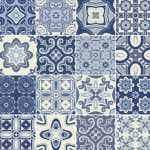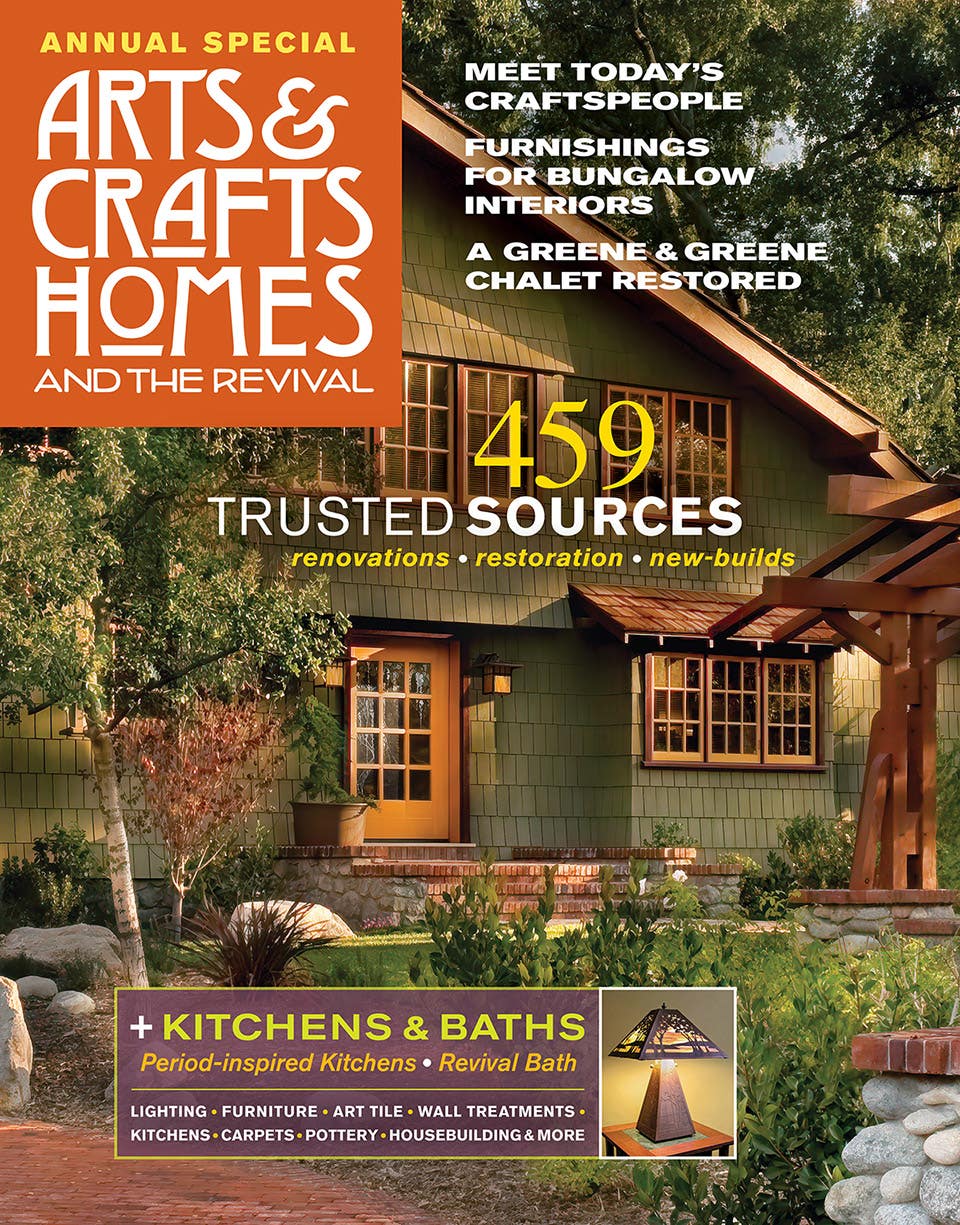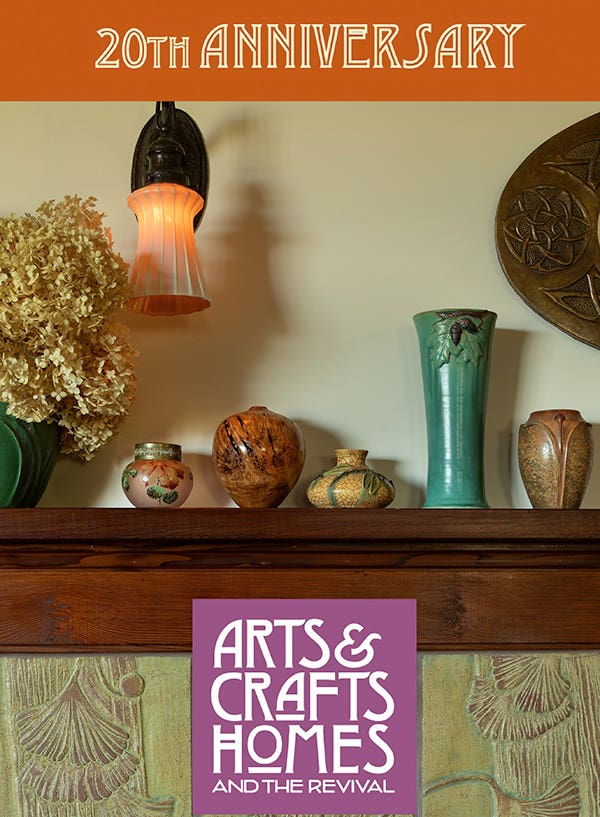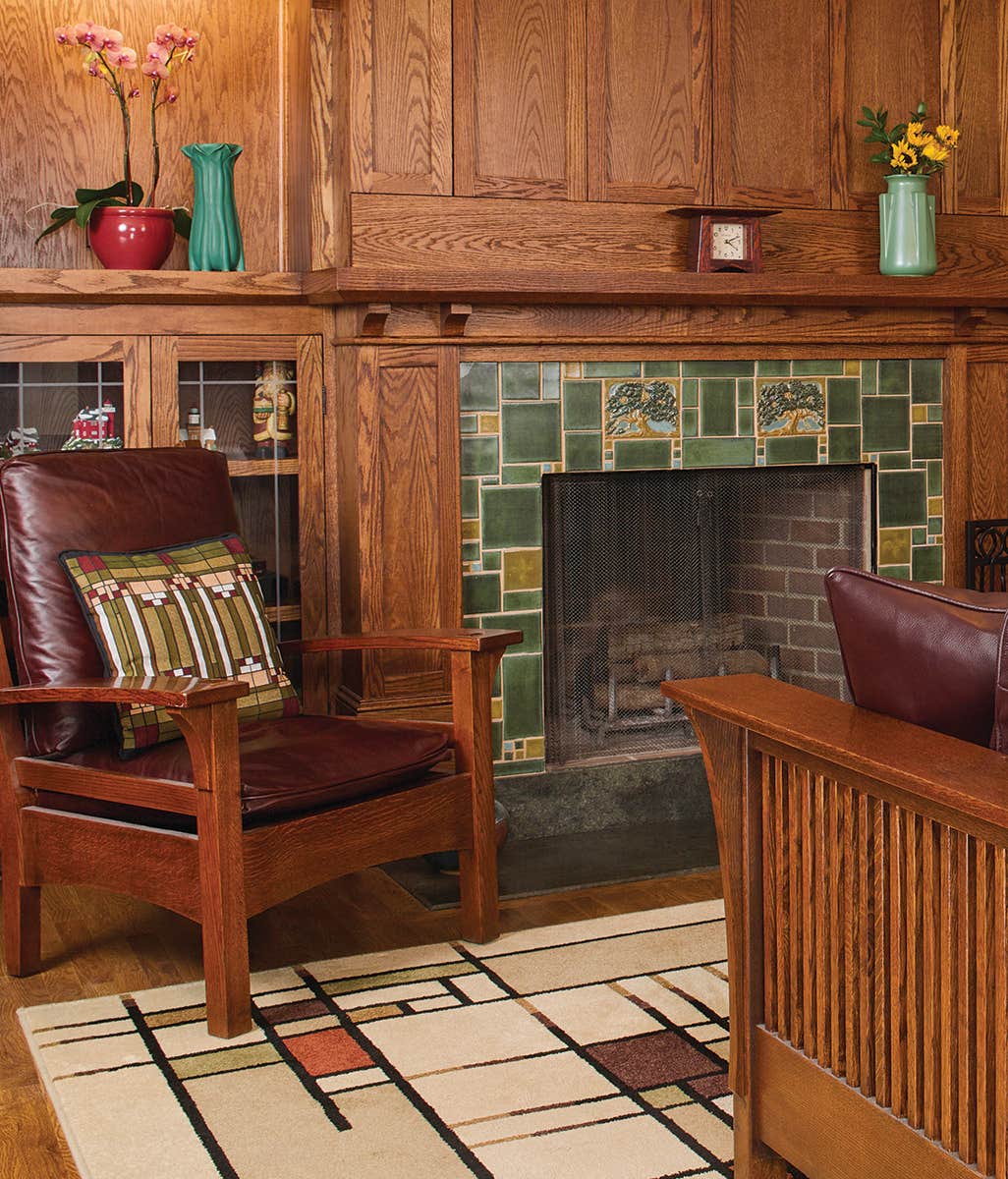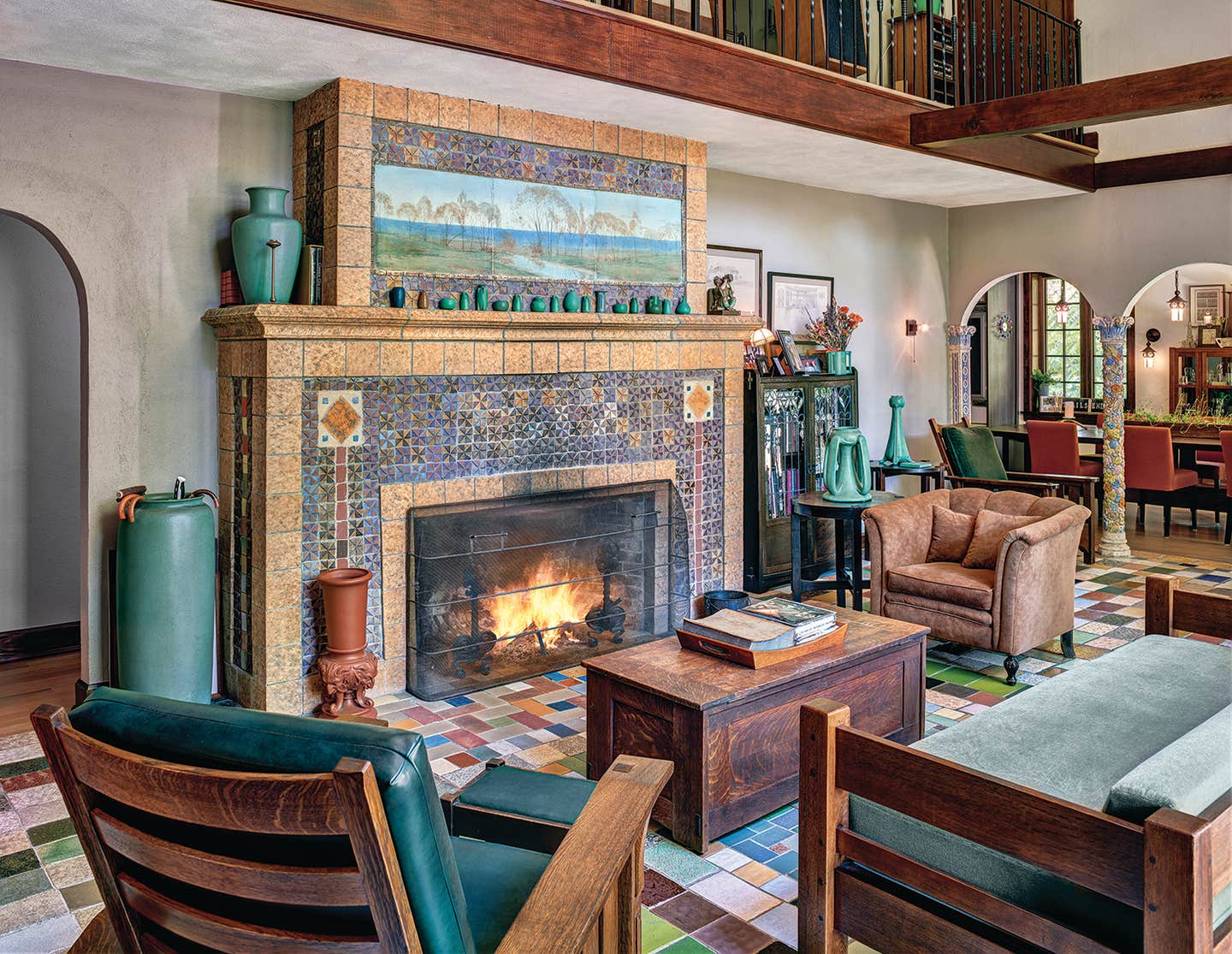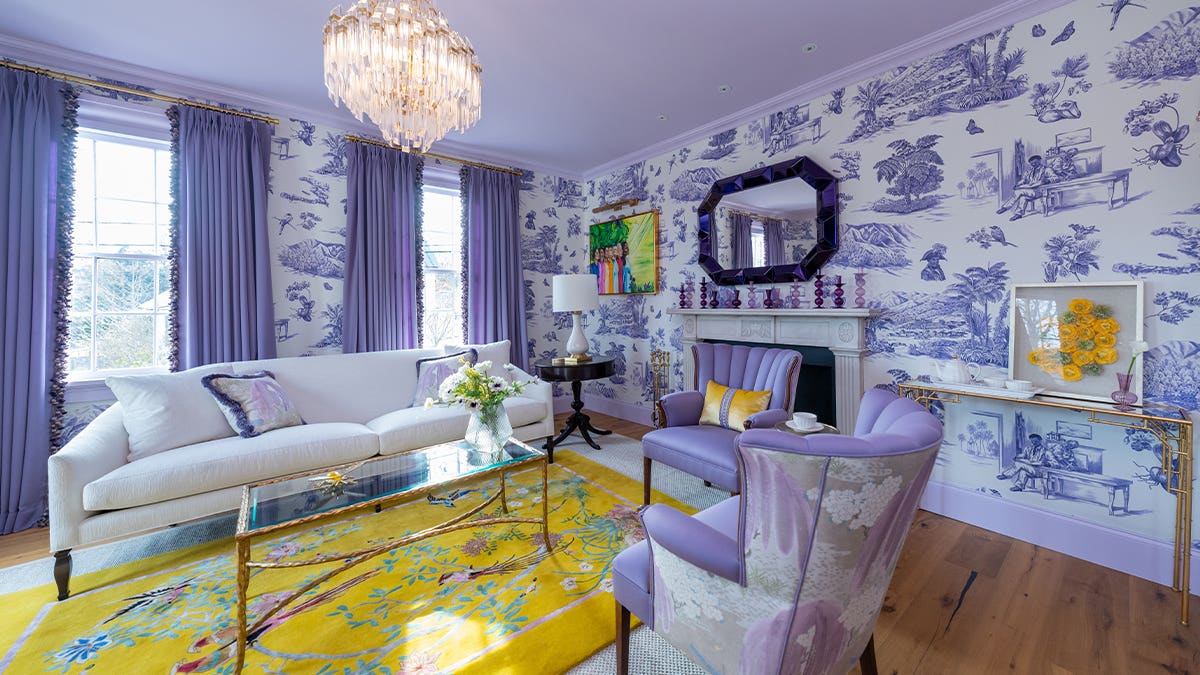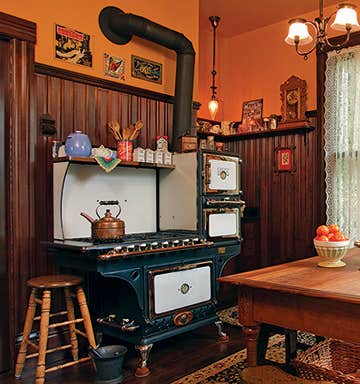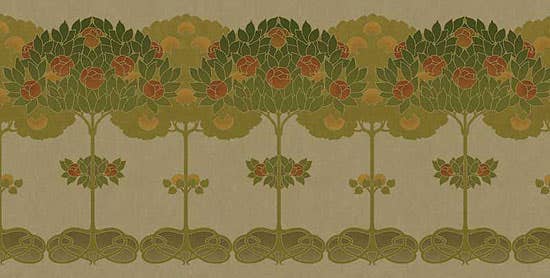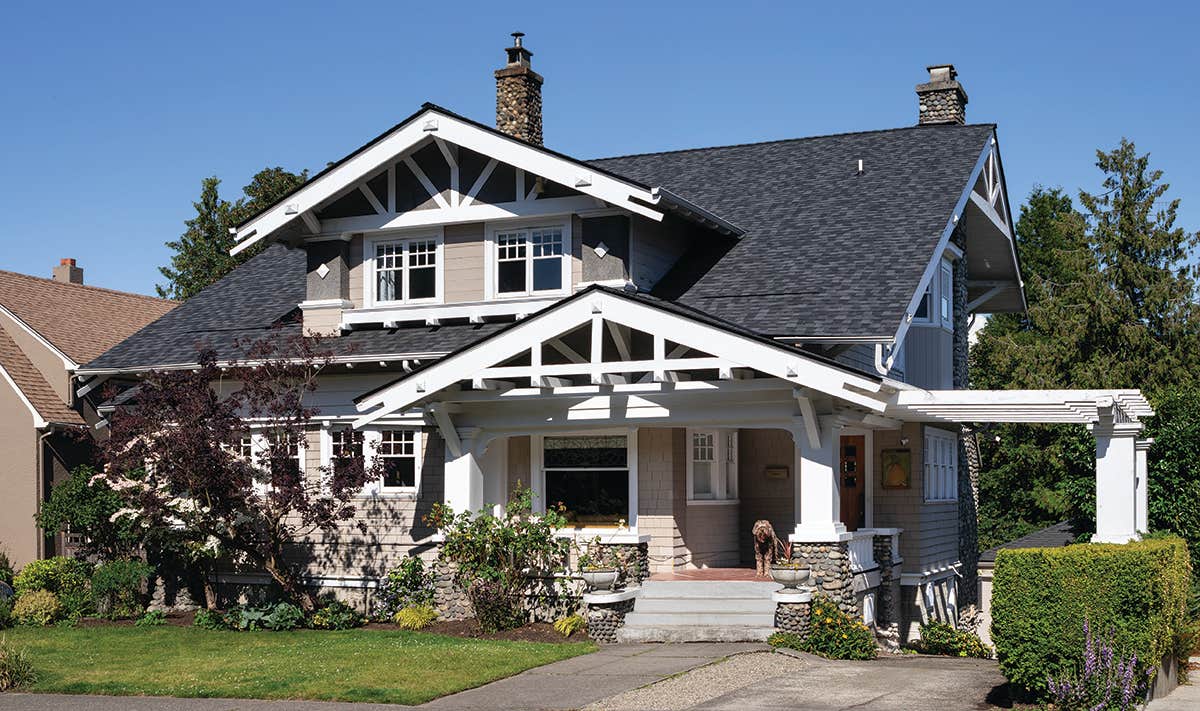Design, Build & Remodel: Bold Houses of the Revival
Today’s designers and builders are embracing new technology, universal design, and more environmentally responsible building practices when working on Arts & Crafts revival-style houses.
A word about designers, millwork, flooring, etc.
The influence of the Arts & Crafts movement is evident in much of today’s residential construction, whether by design or osmosis! Some elements of the Arts & Crafts movement have become quite familiar: enveloping rooflines, battered porch columns and over-scaled brackets, the use of river rock and shingles. Inside, half-walls and colonnades define different rooms in a generally open plan; cozy fireplace inglenooks, built-in window seats, and bungalow-era kitchen nooks have come back. All of these are bungalow basics.
A recent general trend is toward smaller, more naturalistic, more site-specific designs for houses. In many cases, the sensibility, materials, and construction details of the Arts & Crafts period play a part in the pleasing appearance of these homes. On the outside, some of them are near-replica bungalows—not a bad approach when the house is meant to fit into an existing prewar neighborhood. Increasingly, we see architect-designed houses that marry familiar A&C tenets with postmodern design.
Houses of the Arts & Crafts revival incorporate historical details in an interpretive and contemporary way. Today’s designers and builders are embracing new technology, universal design, and more environmentally responsible building practices. Reassuringly familiar, these houses are appreciated from coast to coast—whether it’s a bungalow court of starter homes, or a 6,000-square-foot Craftsman Tudor.
It may be hard to define what’s “Arts & Crafts” about these houses, just as it was during the original movement (ca. 1910). Vernacular and regional sub-styles exist today as before: the East Coast shingled house with classical allusions, the horizontal Prairie house, the cubic Kansas City shirtwaist, the hacienda or Mission Revival house—and, of course, artistic bungalow variants built from Pasadena to Vancouver.
Patricia Poore is Editor-in-chief of Old House Journal and Arts & Crafts Homes, as well as editorial director at Active Interest Media’s Home Group, overseeing New Old House, Traditional Building, and special-interest publications.
Poore joined Old House Journal when it was a Brooklyn-brownstoner newsletter in the late 1970s. She became owner and publisher and, except for the years 2002–2013, has been its editor. Poore founded the magazines Old-House Interiors (1995–2013) and Early Homes (2004–2017); their content is now available online and folded into Old-House Journal’s wider coverage. Poore also created GARBAGE magazine (1989–1994), the first unaffiliated environmental consumer magazine.
Poore has participated, hands-on, in several restorations, including her own homes: a 1911 brownstone in Park Slope, Brooklyn, and a 1904 Tudor–Shingle Style house in Gloucester, Massachusetts, where she brought up her boys and their wonderful dogs.
